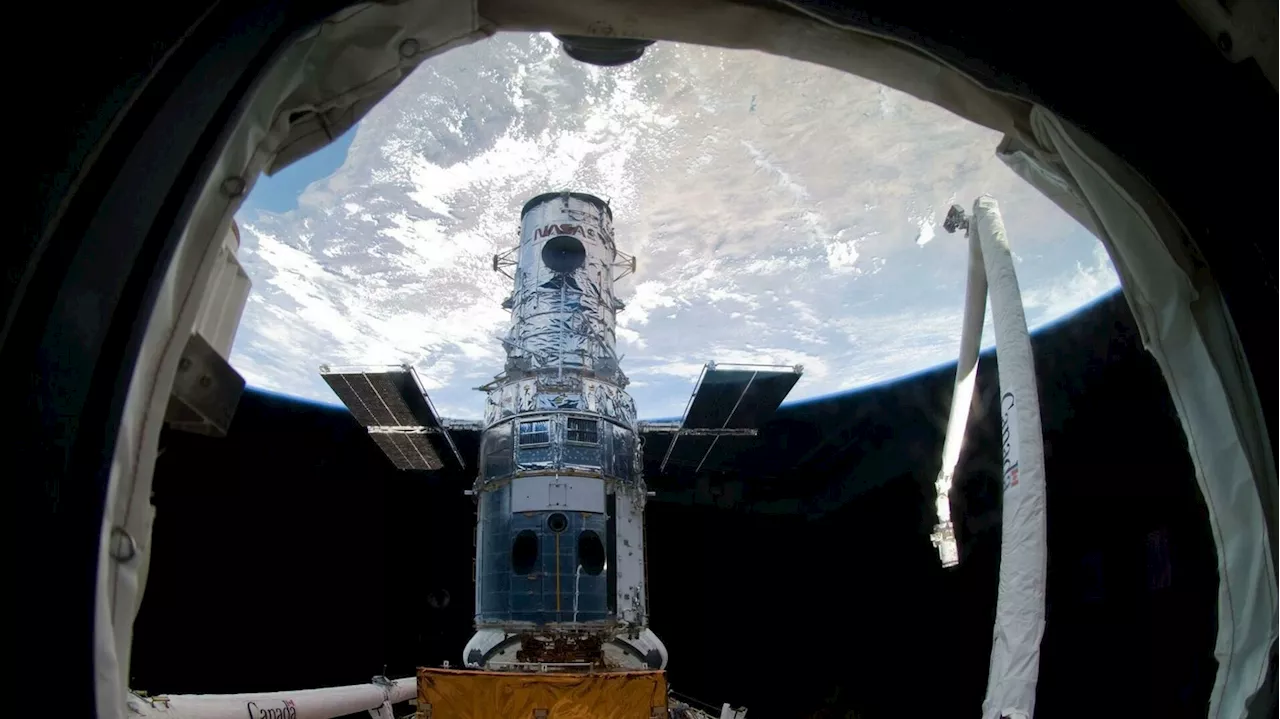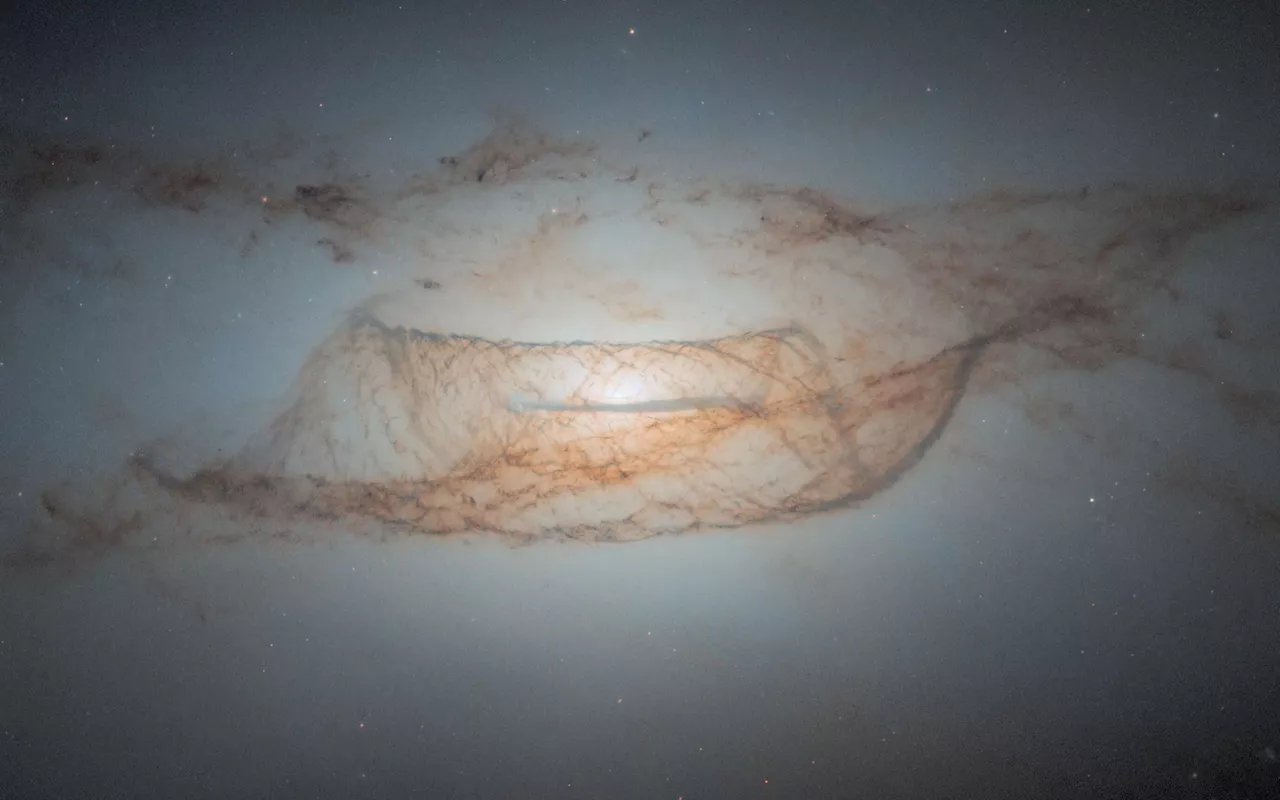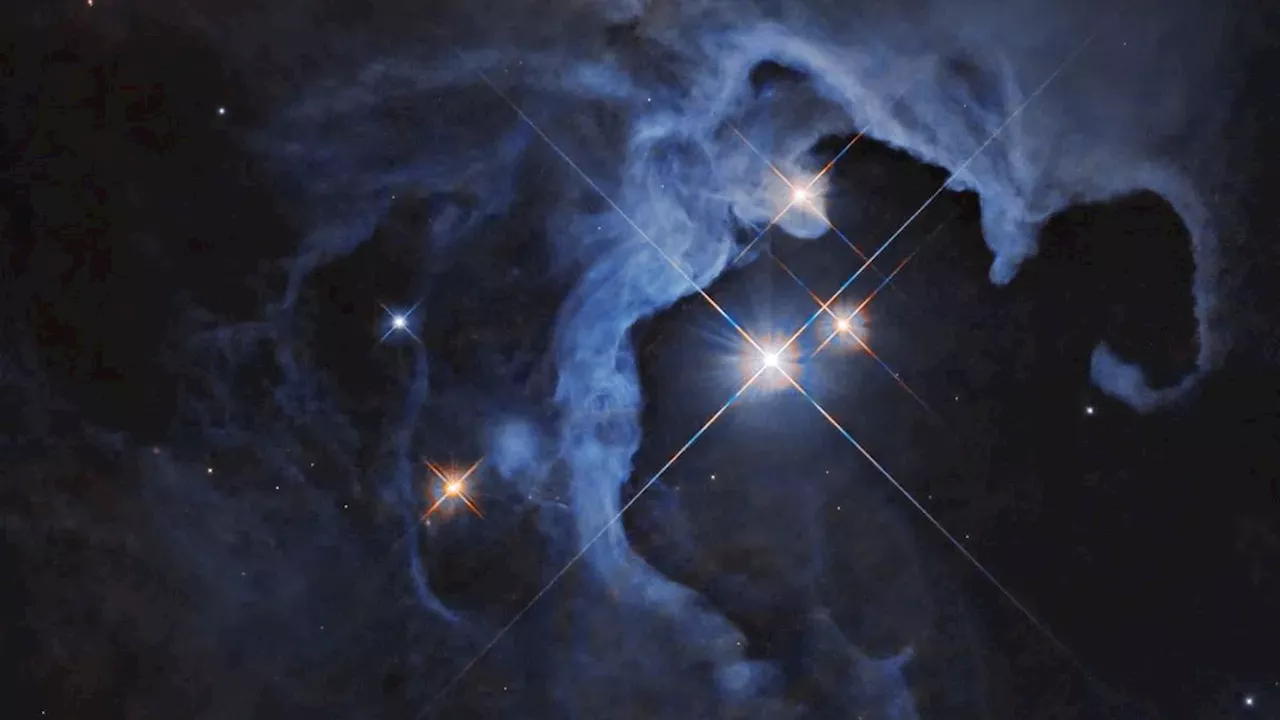Sharmila Kuthunur is a Seattle-based science journalist covering astronomy, astrophysics and space exploration. Follow her on X @skuthunur.
; Image Processing: Gladys Kober )Although we know the sun to be an unchanging, and even predictable source, of light in our skies, its youthful version some 4.6 billion years ago was quite active. During those formative years, our star spewed solar flares every week or so, despite shining only about a third as bright as it does now. Scientists also suspect that even though the early sun exhibited a dim stature, it kept the then-young Earth.
At just 10 million years old, HP Tau is the youngest of its siblings. It resides roughly 550 light-years from Earth in the constellation Taurus, and hasn't yet kicked off theprocess upon which it will soon come to rely on for its energy, and for its light. The star, currently blanketed by thick clouds of gas and dust in which it was birthed, is on its way to becoming a star like the one we see everyday with our own eyes, scientists say. It'll eventually look something like the sun.
HP Tau's brightness fluctuates over time, both periodically and randomly — a cosmic quirk scientists think is because of the young star's chaotic nature. The random changes to HP Tau's brightness can be attributed to surrounding material falling into the star and therefore being devoured by its thralls, as well as to flares erupting on the star's surface. The more periodic changes could be due to sunspots pockmarking the star that rotate in and out of our view, scientists say.
Because our own sun will outlive us, astronomers are interested in studying sun-like stars elsewhere in the universe that are at various stages of their life cycles, from which they can decode the past, relate to the present and draw conclusions about the future of our own sun.
Nigeria Latest News, Nigeria Headlines
Similar News:You can also read news stories similar to this one that we have collected from other news sources.
 Hubble telescope celebrates 34th anniversary with an iridescent Dumbbell Nebula (image)Sharmila Kuthunur is a Seattle-based science journalist covering astronomy, astrophysics and space exploration. Follow her on X skuthunur.
Hubble telescope celebrates 34th anniversary with an iridescent Dumbbell Nebula (image)Sharmila Kuthunur is a Seattle-based science journalist covering astronomy, astrophysics and space exploration. Follow her on X skuthunur.
Read more »
 Supernova-filled galaxy dazzles in new Hubble Telescope imageSharmila Kuthunur is a Seattle-based science journalist covering astronomy, astrophysics and space exploration. Follow her on X skuthunur.
Supernova-filled galaxy dazzles in new Hubble Telescope imageSharmila Kuthunur is a Seattle-based science journalist covering astronomy, astrophysics and space exploration. Follow her on X skuthunur.
Read more »
 Private mission to save the Hubble Space Telescope raises concerns, NASA emails showWhen a private space traveler said he wanted to take a SpaceX capsule on a mission to improve the aging Hubble telescope, NASA studied the options. Internal emails show concern about the risk.
Private mission to save the Hubble Space Telescope raises concerns, NASA emails showWhen a private space traveler said he wanted to take a SpaceX capsule on a mission to improve the aging Hubble telescope, NASA studied the options. Internal emails show concern about the risk.
Read more »
 Dusty galaxy looks like a cosmic net in gorgeous new Hubble Telescope photoSamantha Mathewson joined Space.com as an intern in the summer of 2016. She received a B.A. in Journalism and Environmental Science at the University of New Haven, in Connecticut. Previously, her work has been published in Nature World News.
Dusty galaxy looks like a cosmic net in gorgeous new Hubble Telescope photoSamantha Mathewson joined Space.com as an intern in the summer of 2016. She received a B.A. in Journalism and Environmental Science at the University of New Haven, in Connecticut. Previously, her work has been published in Nature World News.
Read more »
 The Venerable Hubble Space Telescope Keeps DeliveringThe powerful Hubble Space Telescope has delivered another stunning image. This one shows the complex merger-related dust lanes in NGC 4763.
The Venerable Hubble Space Telescope Keeps DeliveringThe powerful Hubble Space Telescope has delivered another stunning image. This one shows the complex merger-related dust lanes in NGC 4763.
Read more »
Hubble Space Telescope marks 34 years with new portrait of a ‘cosmic dumbbell’Editor&8217;s note: Sign up for CNN’s Wonder Theory science newsletter. Explore the universe with news on fascinating discoveries, scientific advancements and more.
Read more »
